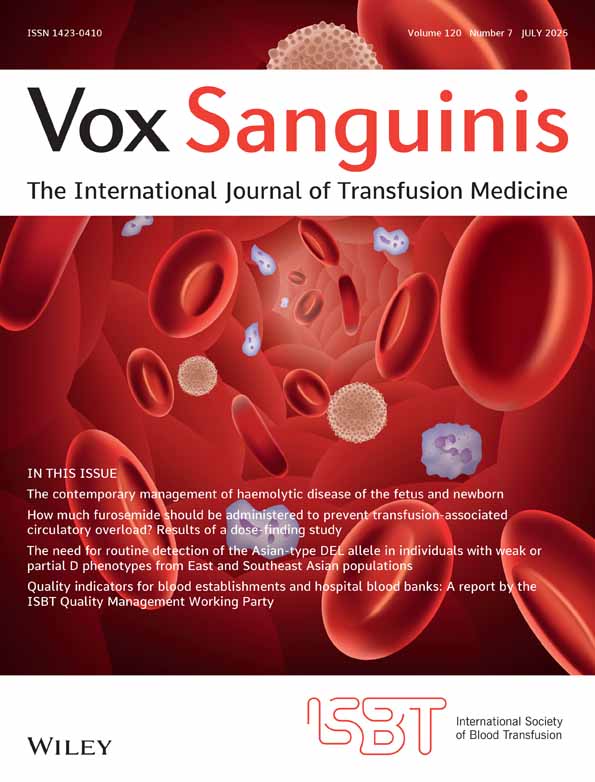The Direct Antiglobulin Test: Still a Place for the Tube Technique?
Abstract
Objectives: Antibodies of different immunoglobulin isotypes, or complement, may coat red blood cells in vivo. They are detected by the direct antiglobulin test (DAT), usually performed by the conventional tube technique. The purpose of this study was to compare the latter technique with the gel test. Methods: Three hundred and ninety-eight consecutive samples, sent to our laboratory for direct antiglobulin testing, were analyzed with the tube technique and the gel test, using reagents from different manufacturers. Eighty-seven samples had been collected from newborns and 23 from fetuses. Results were expressed as positive or negative. Results: In 162 out of 398 cases, the DAT was negative with both methods, whereas in 178 out of 398 cases, the DAT was positive with both techniques using polyspecific antibodies (observed agreement: 84.5%; x = 0.71). Discrepancies between the two methods were observed in 58 cases: 51 samples appeared as DAT positive using the tube method and negative with the gel test, whereas only 7 were positive exclusively with the gel test. Among the 178 samples that were positive with both techniques, 93 samples showed discordant results when evaluated with anti-lgG and 82 with anti-C3d, respectively). The sensitivity of the DAT performed by the gel test, in comparison with the conventional tube technique, was 75.4% (95% confidence interval (CI):69.4–80.8).96.8% (95% CI:92.8–99.0), and 16.3% (95% CI: 9.8–24.9) with polyspecific, anti-IgG and anti-Cd3 reagents, respectively. Conclusions: The gel test appeared to be less sensitive than the conventional tube technique when utilized for DAT, particularly when C3d was present on red blood cells. These results emphasize that before implementing a new technique in the laboratory, comparison with existing techniques, using different reagents, is mandatory.




